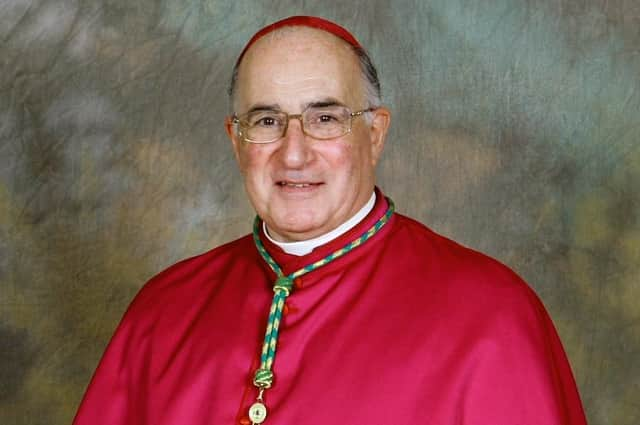Scotsman Obituaries: Archbishop Mario Conti


Archbishop Mario Conti was one of Scotland’s best-known churchmen, a pioneer of ecumenism and the de facto father of the Italian community in Scotland.
He died peacefully at the Queen Elizabeth University Hospital in Glasgow on 8 November after a short illness. He was 88 years old and had been a priest for 64 years and a bishop for 45 years.
Advertisement
Hide AdAdvertisement
Hide AdBorn in Elgin, Moray, in 1934, he told anyone who asked that he had wanted to be a priest for as long as he could remember. It is even said that he told his primary school teacher his ambition was to be Pope! He trained at St Mary's College, Blairs, Aberdeenshire, before studying at the Scots College and Pontifical Gregorian University in Rome where he obtained degrees in philosophy and theology. He was ordained priest in Rome on 26 October 1958.
After a series of roles, including his only Parish Priest appointment to Wick and Thurso – Scotland’s most northerly mainland Catholic parishes – he was named bishop of Aberdeen in February 1977 and ordained bishop by Cardinal Gordon Gray, of St Andrews and Edinburgh, at Aberdeen, on 3 May 1977 at the extraordinarily young age of 43.
He was one of the last surviving bishops in the world to have been appointed by Pope (now Saint) Paul VI. He often spoke fondly of Pope Paul and his great wisdom and courage in steering the Church through the difficult years of the 1960s and ’70s and overseeing the implementation of the Second Vatican Council.
After 25 years in Aberdeen as Bishop he was named as successor to Cardinal Tom Winning as Archbishop of Glasgow in 2002, serving for ten years as head of Scotland’s largest Catholic diocese, during which time he developed deep ties with the city and its people, oversaw the renovation of St Andrew’s Cathedral and the construction of the adjacent Italian Cloister Garden to remember the victims of the wartime Arandora Star tragedy.
The Cathedral renovation is his most obvious legacy. He took a very personal interest in the redesign, famously sketching out the plan for the altar on an envelope before handing it to the marble mason to make happen. He was often found, swapping his mitre for a hard hat, amid the scaffolding, directing the artists to bring the 1816 building to life. On the opening night of the Italian Cloister Garden he welcomed the last survivor of the